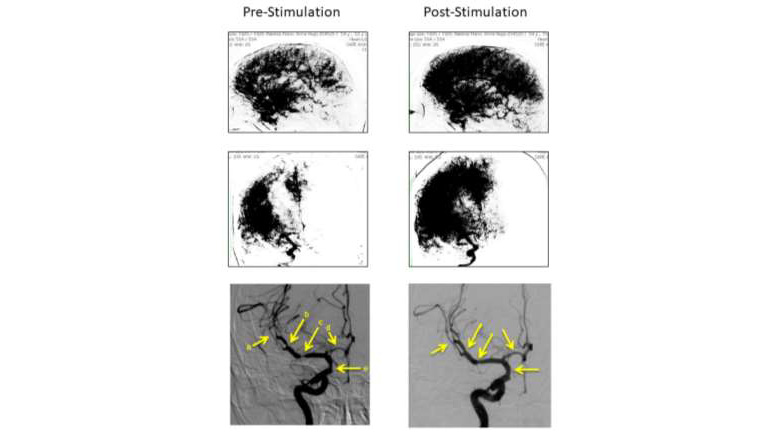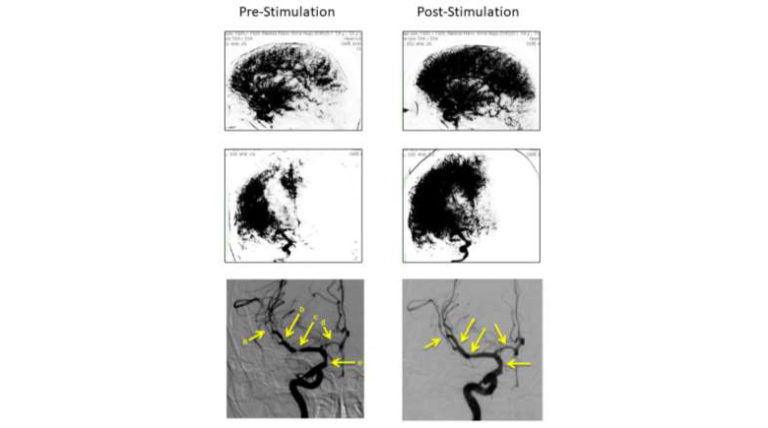
Background: The objective of this pilot study was to assess the safety and efficacy of VitalFlow stimulation in aneurysmal subarachnoid hemorrhage (aSAH) patients with vasospasm for the purpose of guiding the design of larger, controlled studies in vasospasm patients, a largely untreated condition [1] . Methods: Six patients with angiographic vasospasm developing post-aSAH were treated with VitalFlow stimulation. Digital subtraction angiograms were obtained at the time of diagnosis (baseline) and then 30 minutes post-stimulation. A single 2-minute period of stimulation was delivered to the patients using parameters previously shown to be safe, tolerable, and effective at increasing cerebral blood flow (CBF) in healthy volunteers. Results: VitalFlow stimulation improved tissue perfusion as assessed by parenchymography and reversed the constriction of vasospastic arteries. Two patients had only partial improvement and so were treated with intraarterial nimodipine after VitalFlow stimulation, whereas four patients had complete resolution of the vasospasm after VitalFlow stimulation per the treating neuroendovascular surgeon’s evaluation. Clinical examination showed improvement in Hunt and Hess Scale scores assessed post-stimulation. Conclusions: Non-invasive magnetic stimulation of the facial nerve with the VitalFlow stimulator appears to be a safe and effective means to reverse angiographic vasospasm in aSAH patients. Clinical Impact: This study provides Class IV evidence that non-invasive magnetic stimulation of the facial nerves reduce angiographic vasospasm in aSAH patients.

